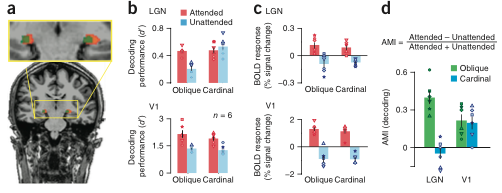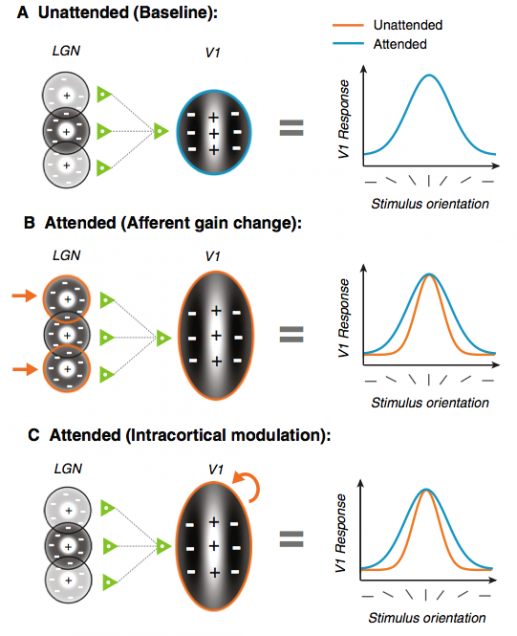Sara Receives NIH Computational Neuroscience training grant
Congrats to Sara Aghajari, who received an NIH fellowship to carry out her doctoral research for the coming year!
Congrats to Jianfei Guo
Congratulations to lab member Jianfei Guo, who is joining Joo-Hyun Song's lab at Brown University for grad school!
Congrats to Savannah Lokey!
Congrats to lab alum, Savannah Lokey, who just accepted an internship position at NIH, working in Leslie Ungerleider's lab!
Attention alters orientation processing in the human lateral geniculate nucleus
Nature Neuroscience (2015)
Sam Ling, Michael Pratte & Frank Tong
Orientation selectivity is a cornerstone property of vision, commonly believed to emerge in the primary visual cortex (V1). Here, we demonstrate that reliable orientation information can be detected even earlier, in the human lateral geniculate nucleus (LGN), and that attentional feedback selectively alters these orientation responses. This attentional modulation may allow the visual system to modify incoming feature-specific signals at the earliest possible processing site.
A review of the mechanisms by which attentional feedback shapes visual selectivity
Brain, Structure & Function (In Press)
Sam Ling, Janneke Jehee & Franco Pestilli
The glut of information available for the brain to process at any given moment necessitates an efficient attentional system that can ‘pick and choose’ what information receives prioritized processing. A growing body of work, spanning numerous methodologies and species, reveals that one powerful way in which attending to an item separates the wheat from the chaff is by altering a basic response property in the brain: neuronal selectivity. Selectivity is a cornerstone response property, largely dictating our ability to represent and interact with the environment. Although it is likely that selectivity is altered throughout many brain areas, here we focus on how directing attention to an item affects selectivity in the visual system, where this response property is generally more well characterized. First, we review the neural architecture supporting selectivity, and then discuss the various changes that could occur in selectivity for an attended item. In a survey of the literature, spanning neurophysiology, neuroimaging and psychophysics, we reveal that there is general convergence regarding the manner with which selectivity is shaped by attentional feedback. In a nutshell, the literature suggests that the type of changes in selectivity that manifest appears to depend on the type of attention being deployed: whereas directing spatial attention towards an item only alters spatial selectivity, directing feature-based attention can alter the selectivity of attended features.



